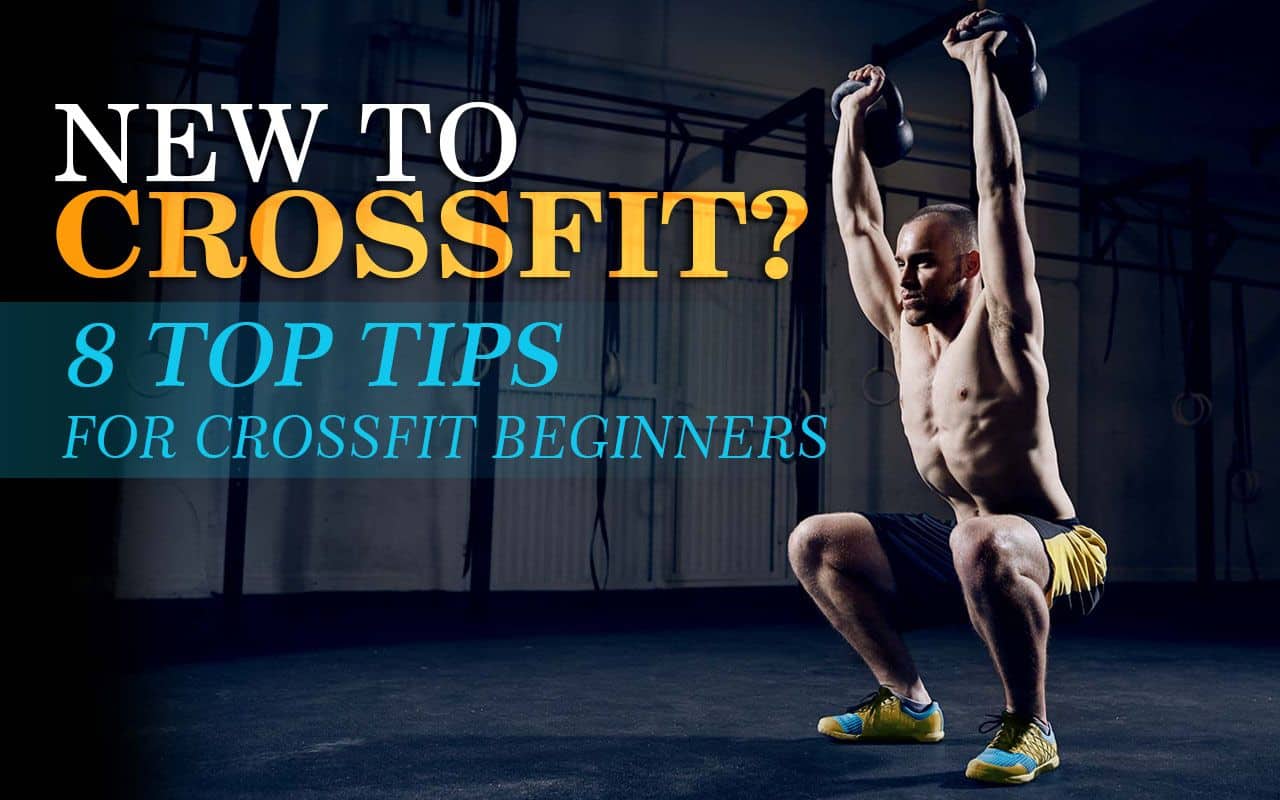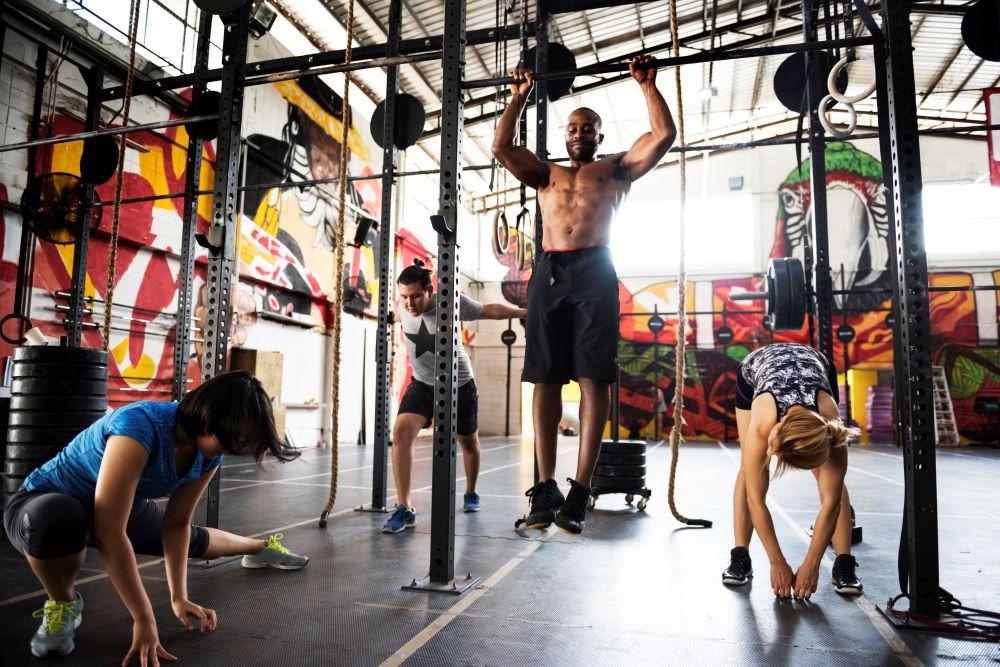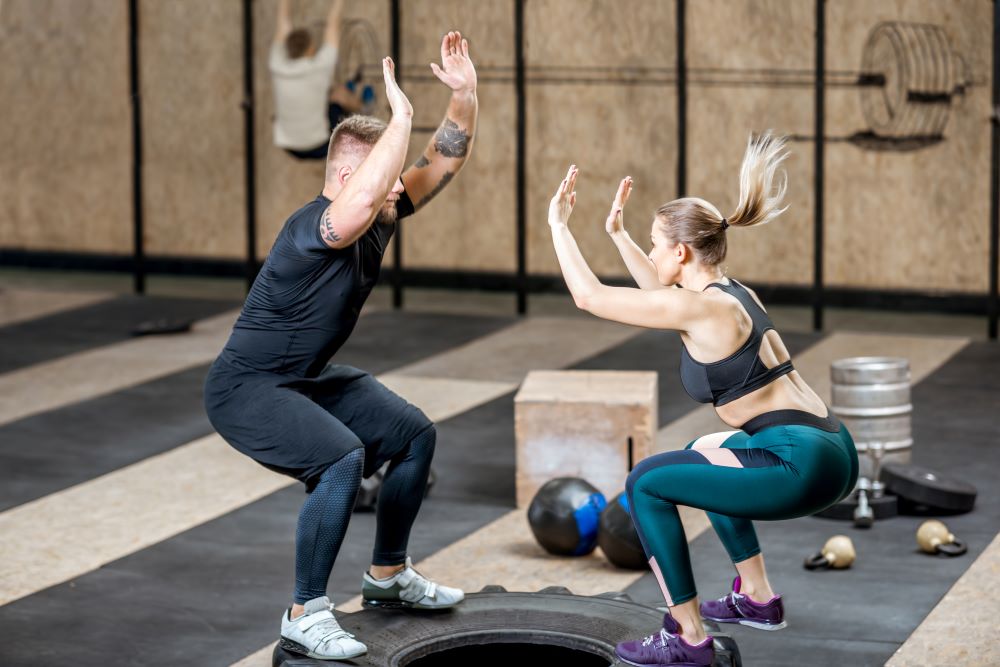
Embarking on a CrossFit journey can be both exhilarating and daunting, especially for beginners. The regimen, known for its high-intensity and varied functional movements, aims to improve physical strength and conditioning.
For newcomers, understanding the philosophy behind CrossFit and its community-centric approach is as crucial as the workouts themselves. It revolves around not only enhancing personal fitness but also fostering a supportive environment where every member pushes one another toward their peak performance.

Prior to attending the first class, it’s important to start with the basics, to ensure a solid foundation is built for future progress. This means getting acquainted with common exercises and the typical structure of a CrossFit workout, which often includes a warm-up, a skill development segment, the high-intensity workout of the day (WOD), and a period for stretching and cool down.
Safety should be a top priority, with proper form and technique taking precedence to minimize the risk of injury. As beginners progress, they must also consider nutrition and recovery as integral parts of their routine, as these are essential to maximizing the benefits of their hard work and dedication to the sport.
CrossFit combines high-intensity functional movements with a dynamic community environment, offering a diverse training philosophy that welcomes participants at every fitness level.
CrossFit is a strength and conditioning program designed to foster all aspects of fitness. Central to its philosophy is the practice of functional movements that reflect the best aspects of gymnastics, weightlifting, running, rowing, and more.
These are executed at high intensity to achieve overall physical fitness, which CrossFit defines as competency in all physical tasks. Beginners to CrossFit can expect a varied regimen that avoids routine, ensuring that workouts are broad, general, and inclusive.
A key element of CrossFit is its community. It’s often described as the “sport of fitness” because of the supportive, team-like atmosphere that it promotes. This community aspect is pivotal, as it provides motivation and a sense of camaraderie for beginners and veterans alike.
The inclusive environment encourages individuals to push past their personal limits, creating a shared experience where everyone works toward common goals and celebrates each other’s progress.

Before diving into CrossFit, it’s essential for beginners to understand proper form, recognize foundational movements, and get acquainted with the structure of Workout of the Day (WOD) sessions.
Honoring the fundamentals of form is critical in CrossFit to enhance performance and prevent injury. Beginners should prioritize learning the correct techniques for each exercise. For example, when performing deadlifts, maintaining a straight back and using the legs to lift are key to a safe and effective lift.
CrossFit incorporates a variety of basic movements that form the cornerstone of many workouts:
WODs, or Workouts of the Day, are a staple of CrossFit and vary in structure. They often combine strength work with high-intensity intervals, and beginners should start with scaled-down versions, focusing on mastering form over speed or weight.
An understanding of WOD structure, including common terms such as AMRAP (As Many Rounds As Possible) and EMOM (Every Minute On the Minute), is advantageous for new CrossFit athletes.
Before attending their first CrossFit class, individuals should be ready both mentally and physically. Knowing what to bring and what to expect at the CrossFit box will ease beginners into the experience.

When embarking on the journey of CrossFit, beginners will encounter a variety of workout structures, each designed to improve different aspects of fitness.
AMRAP, which stands for “As Many Rounds As Possible,” is a common format where individuals aim to complete as many rounds of a series of exercises within a specified time frame. This structure pushes one’s cardiovascular endurance and capacity to maintain strength under fatigue.
EMOM – “Every Minute On the Minute” – involves performing a specific number of reps at the start of every minute, then resting for the remainder of that minute. It aids with developing both stamina and time management within a workout.
In terms of intensity, workouts are typically high, encouraging athletes to push to their limits while maintaining proper form. High-intensity training is a hallmark of CrossFit, offering a rapid way to improve one’s physical condition.
The load, or weight used during exercises, is customizable based on an individual’s skill level, which allows beginners to progress safely. An emphasis is placed on gradually increasing the load as one becomes more comfortable with movements and their own strength capabilities.
CrossFit workouts are varied and can include thousands of combinations of exercises. A workout might involve only bodyweight movements or could include the use of barbells, dumbbells, kettlebells, and other equipment. The key is to scale the workout to the individual to ensure safety and consistent progress.
| Component | Description |
| AMRAP | Complete as many rounds as possible in a given time. |
| EMOM | Perform a set number of reps at the start of every minute. |
| Intensity | Workouts should challenge you while maintaining proper form. |
| Load | Choose weights that are challenging but manageable. |
CrossFit’s versatility and scalable nature make it accessible for beginners, allowing for adjustments in intensity and load to match an individual’s current fitness level.
CrossFit incorporates a wide range of exercises that build strength, endurance, and agility. Whether it’s mastering bodyweight movements, lifting weights, or performing gymnastic exercises, CrossFit beginners should start with the basics and progressively increase the complexity of their workouts.
Starting with bodyweight exercises is a great way for beginners to learn proper form and build a fitness foundation.
These exercises help build muscular endurance and can be scaled to match individual fitness levels.
Weightlifting is a core element of CrossFit that requires focus on form and safety.
These lifts are fundamental to strength development in CrossFit, with incremental increases in weight to ensure continuous progression.
Incorporating gymnastics movements into CrossFit training enhances body control and coordination.
These exercises demand precision and practice to master, with a focus on technique to avoid injury.
In CrossFit, safety is paramount and injury prevention is crucial to ensure long-term fitness gains and health. Poor technique or overexertion are dangerous and may lead to injury if not addressed. Here are specific strategies for beginning CrossFitters to stay safe and minimize injury risks.
Scaling exercises is fundamental for beginners to develop skills and build strength without compromising safety. A beginner may start with lighter weights or modified versions of complex movements to avoid strain and overexertion. For example, instead of jumping into heavy Olympic lifts, they may focus on learning the movement patterns with a PVC pipe or an empty barbell. Progress should be gradual; they should increase intensity and weight only when they can consistently maintain good form.
Understanding and heeding the body’s signals is key to preventing injury in CrossFit. Beginners should be attentive to fatigue, discomfort, or pain, as these may be indicators of potential injury. Rest and recovery play a vital role in CrossFit, where muscles and joints need time to recuperate. They should ensure they get enough sleep and proper nutrition to support their training. If something feels wrong during a workout, they must not hesitate to stop and seek guidance from a coach.

In CrossFit, proper nutrition fuels workouts and speeds up recovery, while a smart recovery strategy reduces muscle fatigue and injury risk.
When engaging in CrossFit, athletes should consume a balanced diet that includes lean proteins, complex carbohydrates, and healthy fats. For instance, breakfast might consist of Greek yogurt with berries and almonds, offering a mix of protein, antioxidants, and healthy fats.
Recovery is essential, as it allows the body to replenish energy stores and repair damaged tissues.
Progress in CrossFit is marked by continual improvement in strength and endurance through well-defined goals and meticulous tracking. Beginners should focus on consistent, incremental progress to build a solid foundation, both physically and mentally.
In CrossFit, setting achievable goals is critical. They provide clear targets to work toward and a sense of accomplishment as beginners mark milestones in their fitness journey. For instance, one might aim to perform their first pull-up within three months or increase their back squat weight by ten percent in six months.
These targets should be S.M.A.R.T goals—Specific, Measurable, Achievable, Relevant, and Time-bound. They define progress in tangible terms, such as improving the number of repetitions for a particular exercise or mastering a new technique in a set timeframe.
Tracking improvements is pivotal for anyone in CrossFit. Beginners could maintain a workout journal or use a digital app to record their daily workouts, weights, and times. This historical data becomes an invaluable tool to monitor increases in strength training and endurance over time.
Noting benchmarks in the clean and jerk or time improvements on standard WODs (Workout of the Day) can be especially motivating. Moreover, reflecting on the data helps identify areas of progress and where additional focus is needed—be it in mobility, strength, or cardiovascular capacity. Tracking ensures a quantifiable measure of their improvements, keeping beginners aligned with their fitness goals.

Entering the world of CrossFit involves a significant learning curve and a need for solid foundational knowledge. The following subsections address some of the most pressing concerns that beginners may have.
When starting CrossFit, beginners should prioritize mastering proper form and technique above lifting heavier weights. Understanding the fundamentals of movements is crucial because it to help prevent injuries and ensures long-term progress.
Anyone can start CrossFit, regardless of their current fitness level or weight. CrossFit workouts are scalable, meaning exercises can be adjusted to each individual’s abilities. Starting slowly and progressing at their own pace is recommended for new athletes.
Beginners are advised to attend CrossFit classes two to three times per week. This allows enough time for recovery while still providing consistent practice to build strength and improve conditioning.
CrossFit is suitable for individuals over 40, with modifications and scaling options available to cater to varying fitness levels. It’s important for older athletes to listen to their bodies and consult with their coaches to tailor the workouts appropriately.
Beginner workouts that can be done at home may include bodyweight movements such as push-ups, air squats, and simple cardiovascular exercises like jumping jacks. These foundational movements are essential for building the physical preparedness for more advanced exercises.
One should expect the first CrossFit class or beginner program to include an introduction to basic movements, an understanding of gym etiquette, and a scaled workout suited to new participants’ current fitness levels. Expert guidance from the coach is standard to ensure safety and proper form.